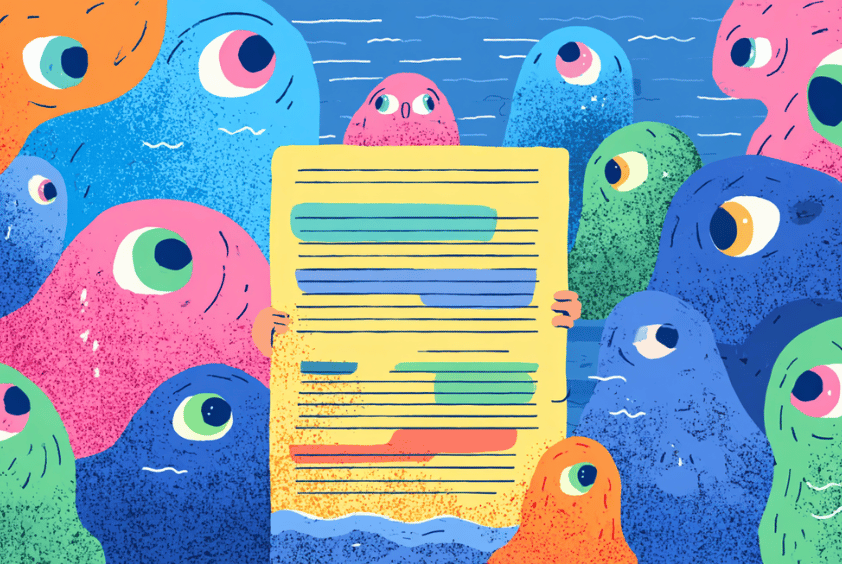“The customer is always right.”
Everyone in customer success, and in business in general, has heard this phrase before. First said by entrepreneurs in the early 1900s, this statement is a core belief of many customer success practitioners.
My experience has led me to a slightly different take. In most cases, I believe that the customer is directionally right. More specifically, the customer has some idea of what outcome(s) they want to achieve but needs guidance to achieve them. If your customer thought they could do it themselves, why use your product?
Unfortunately, you can’t satisfy every single customer's needs and wants.
That is why it is critical to set and manage expectations so that your customer has the best chance to succeed using your product.
Why Expectations Make or Break Retention
Over-promising to a customer and not delivering is exponentially worse than setting realistic expectations and delivering on your commitments.
There are two reasons for this:
- Your customer’s plan is based on the information you give them. If you don’t set their expectations correctly, they face the consequences of not delivering to their organization or customers. I have been on both sides of this myself.
- “The Boy who Cried Wolf”. Over-promising/misaligning expectations and failing to deliver outcomes can lead to mistrust. After not setting expectations properly, your customers won’t fully trust you and your product, even when expectations are correctly set.
Different Paths Require Different Steps
When setting expectations, categorize your responses into three buckets for your customers
“Yes, you can expect that from us.”
If Yes is your answer, be prepared to show the customer how and when you can meet/exceed their expectations. Here’s an example:
“Yes, I believe we can deliver that report to you by Feb 20th. The report will have Item A, Item B, and Item C. Does this work for you?”
Notice the key elements of this response.
- I gave them a clear “yes”.
- I told them when the report would be delivered.
- I included what items would be included in the report.
- Most importantly, I asked for their acknowledgment to ensure we were on the same page.
What happens if you know the answer is yes, but aren’t sure the how and when?
The best CSMs I have worked with are transparent with the customer when they don't have an immediate answer and provide a plan of action.
Here’s a response when you don’t know the how and when.
“Yes, I believe we can deliver that, but I am not sure how or when we can. Can I get back to you via email on Feb 20th with that information?”
Again, let the customer know when they can expect to hear from you and get them to acknowledge your response so everyone is on the same page.
Last point. If that timeline changes, update the customer immediately. In my experience, most customers are ok with 1-2 changes to a timeline before getting frustrated, but silence and/or missing your commitment date will drive them nuts.
“No, we can not do that, or we will not do that.”
Can not and will not are two different things, but both require an explanation. If your answer is no, be prepared to explain why. An example I have used many times before is “no, we cannot do that because it is outside the scope of what our product does”.
In my experience, this is the most challenging answer to provide to your customers, but it also is the most necessary answer to give correctly. You will lose your customer’s trust if you say “yes” now and then have to walk back on it later.
Trust me, I have made this mistake, and the latter conversation has been some of the worst moments of my career.
“I don't know if we can do that. Let me research and get back to you by (insert date).”
I have had many instances where the customer asked a question I couldn’t answer on the spot.
You won't always be able to set the expectation right then and there, but it is imperative to:
- respond immediately.
- tell them when you will provide an answer.
Example
“That is a great question. I don't know whether or not we can provide that, so let me research whether we can add that feature and when it might be available. I will get back to you with a response by Feb 20th.”
Documenting Expectations
Make sure you recap those expectations in writing to your customer and do your best to get the customer to acknowledge the recap. I have made the blunder many times of setting a verbal expectation with a customer at 9:25 am, then going to 6 more meetings that day before I can recap.
Sometimes I’ve forgotten what expectations were. Even worse, I’ve written the expectation incorrectly in a recap email. So find a way to note it as it happens or get yourself a sound recording software that you can reference (examples include Jiminny, UpdateAi, or Salesloft). This last one is hard to do, but even an email with 2-3 bullet points goes a long way as the relationship develops.
As CS practitioners, doing as much as we can to satisfy our customers is ingrained. The best CSM’s I have worked with are the ones that can balance finding solutions to meet their customers’ use case(s), but have the confidence to say when something cannot be done.
Proper expectation setting is the critical tool that successful CS practitioners use. While proper expectation setting won’t guarantee a renewal, lacking it will ensure churn. The customer is not always right, but they should always know what to expect from you and your organization.
Now set those expectations!



.png)


